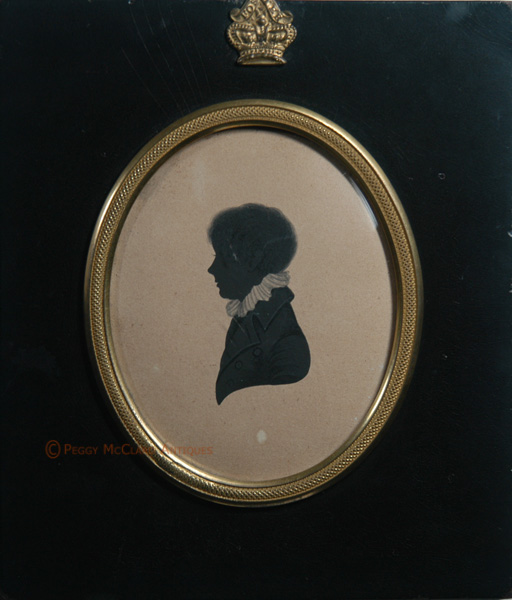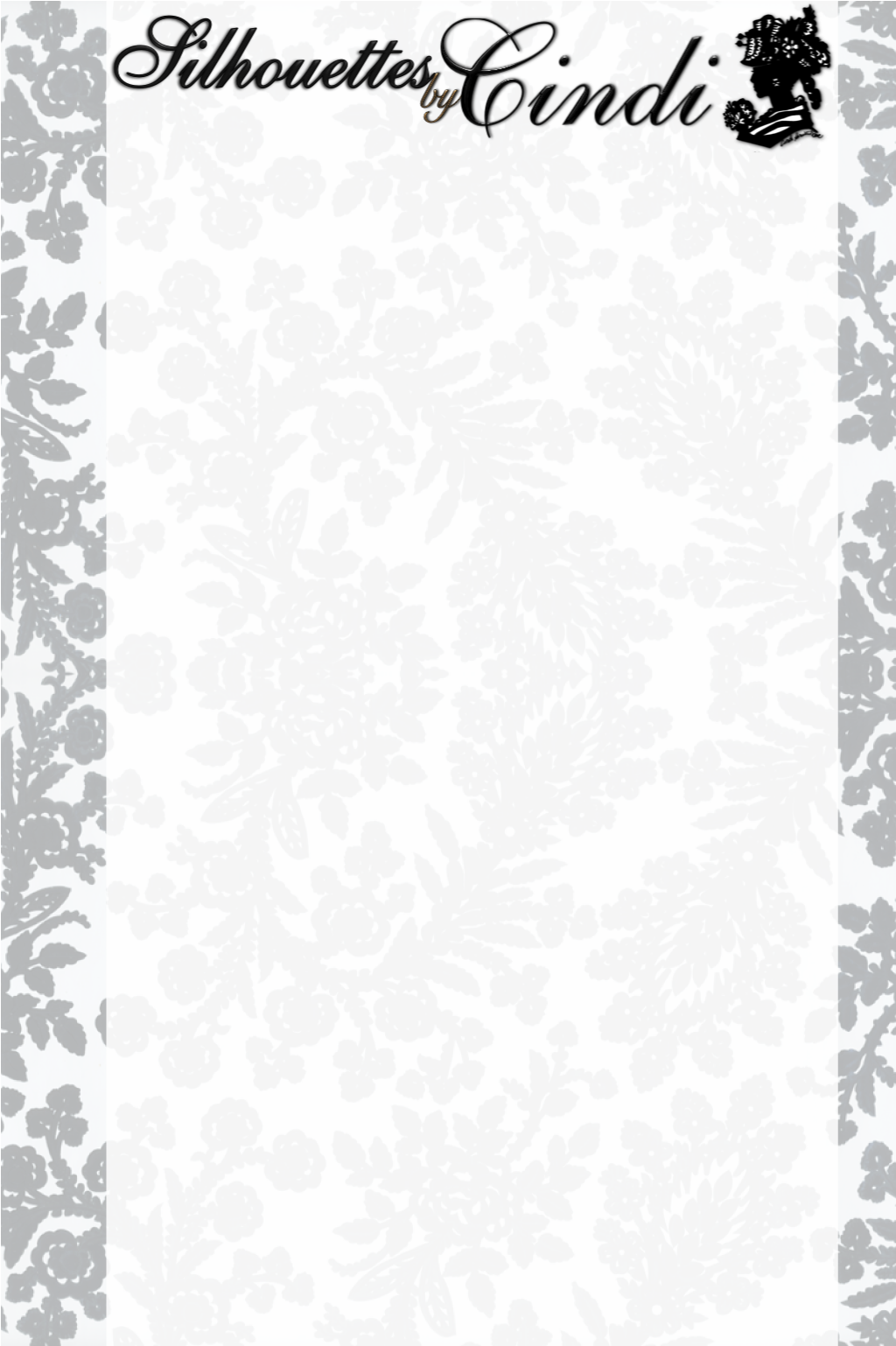
Consise History of Silhouette art, past and present
Collaborated by internationally acclaimed silhouette historian Peggy McClard and master silhouette artist Cindi Harwood Rose.
Miniature portraits had been the rage of aristocracy whom had worn portraits as jewelry since at least the 15th century. But for 300 years, the expense required for a full color likeness to be commissioned had restricted the availability to the wealthy and kept the ordinary person from acquiring a portable likeness of their loved ones.
At the beginning of the 18th century a theory called “physiognomy” became vogue. “Physiognomy” was defined as the art of discerning the character of the mind from the features of the face. In 1775, Swiss theologian and poet Johann Kaspar Lavater wrote a treatise Physiognomische Fragmente in which he attempted to elevate physiognomy to the level of science. The translated version of Lavater’s book was a best seller in England and the book’s heavy use of silhouettes to illustrate Lavater’s theories helped elevate the popularity of silhouette cutting.
With the advent of Lavater’s widely read treatise, shade portraits became popular with the masses as a cheaper alternative to full color portraits. Originally called "Profile Shades" or "Shadows" in England, the French coined the term à la Silhouette as a derogatory reference to Louis XV's former French Minister of Finance, Etienne de Silhouette, who was considered a cheapskate. Legend says that when de Silhouette left his government position, he retired to a farmhouse which he decorated with home-made paper cuttings.
The History of Silhouettes - Part 2

Home | Cindi's YouTube Channel | Facebook | Follow Cindi on Twitter | Pinterest | Google+
All content Copyright © 2013 Cindi Harwood Rose - 713 622-3610 - CindiSilhouettes@gmail.com


